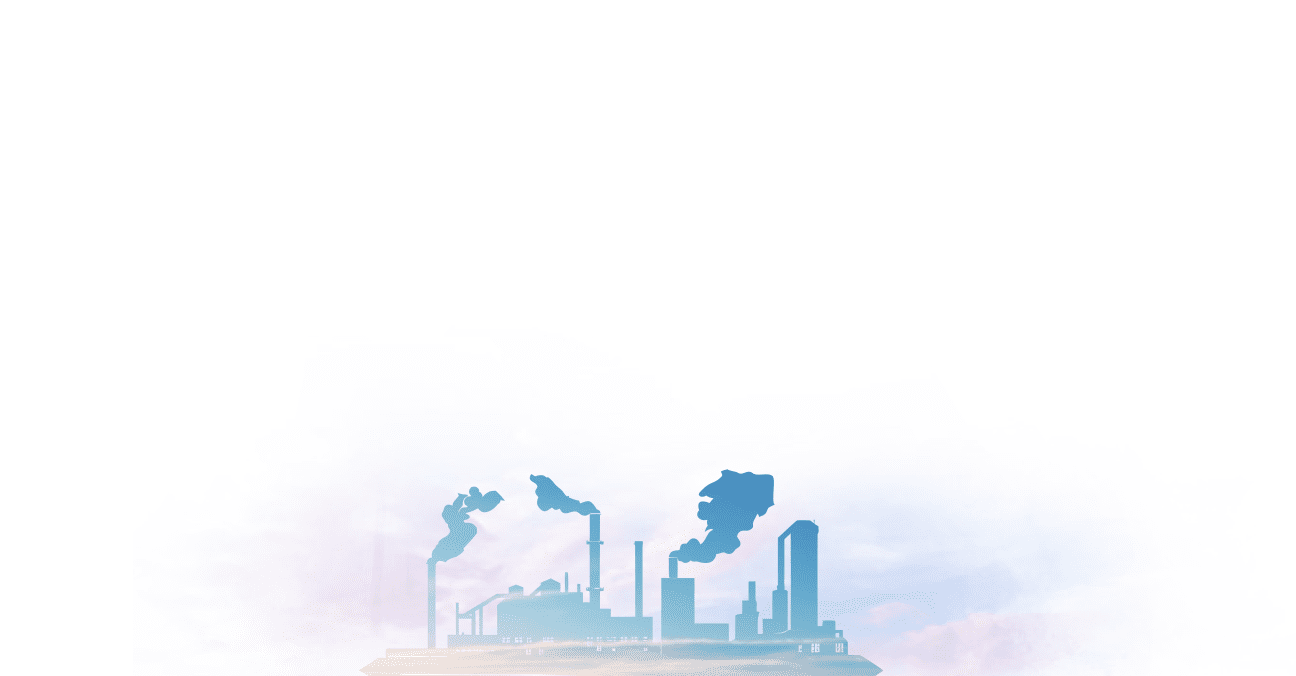Air
GRI 413‑2Norilsk Division operations emit over 60 pollutants into the air, with sulphur dioxide accounting for 99% of the total volume. Given this, one of Nornickel's priorities is to cut sulphur dioxide emissions as set out in its Environmental and Climate Change Strategy through 2031.
In line with the Environmental Policy, MMC Norilsk Nickel and its business units undertake to implement strategic environmental projects and initiatives to reduce emissions. Our major effort in this area in terms of scale and funding is the Sulphur Programme, a landmark initiative under the Clean Air federal project (Environment national project).
Sulphur Programme
The Sulphur Programme is Nornickel’s large‑scale environmental project on sulphur dioxide (SO2) capture and recovery, which is one‑of‑a‑kind globally. The technology leveraged by the Sulphur Programme involves intermediate production of sulphuric acid with a high rate of sulphur dioxide recovery and subsequent acid neutralisation to obtain gypsum.
Progress against the Sulphur Programme in Norilsk Division
On 25 October 2023, the Company launched comprehensive testing of the first line of sulphur dioxide recovery from off‑gases generated by flash smelters at Nadezhda Metallurgical Plant.
The integrated project implemented at Nadezhda Metallurgical Plant as part of the Sulphur Programme will run in stages. Comprehensive machinery testing includes the phased launch of core process equipment and sourcing of off‑gases from a flash smelter to be recycled into the first batch of sulphuric acid. The startup and adjustment of certain machines, as well as the entire chain of sulphuric acid production and neutralisation, revealed a consistently growing environmental effect of sulphur dioxide recovery.
To confirm that pollutant concentrations went down to the planned level during the phased project implementation, a certified laboratory performed an instrumental measurement of industrial sulphur dioxide emissions, with information on fulfilling the obligations and achieving the emission reduction targets communicated to Rosprirodnadzor's Central Office, the Ministry of Environment Protection and Natural Resources of the Krasnoyarsk Territory, and the Clean Air PMO.
As the project reaches target parameters, the Company will meet statutory requirements on cutting pollutant emissions in Norilsk.
Nornickel's investments in the full implementation of the Sulphur Programme will total RUB 180 bn
The Company together with the Institute of Economic Forecasting of the Russian Academy of Sciences assessed the benefits from the construction and operation of sulphur capture and recovery facilities for the Russian economy and society, with the following outcomes expected going forward:
growing output of enterprises from allied sectors;
redistribution of additional profits throughout wider economy in the form of salaries for employees, earnings for businesses, and taxes paid to the budget of Russia;
a positive macroeconomic impact on GDP growth;
an increase in end demand for domestically produced goods;
improved environmental well‑being and quality of life for local communities (positive trend in public health and lower excess mortality in Norilsk).
As part of air pollution management efforts, we are upgrading a system to remove dust from gases generated by Kola MMC's Refining Shop and used in sulphur production, which includes replacing electrostatic precipitators and heat exchangers.
I have been working at Nadezhda Metallurgical Plant practically from its inception, and I cannot live without my job. I know equipment at our elemental sulphur shop like the back of my hand, and I am eager to share my knowledge and expertise with novices. Nadezhda Metallurgical Plant has a continuous production process.
We decided to make commemorative medals the size of a hockey puck from elemental sulphur and inscribe them “Norilsk. Elemental Sulphur Shop No. 1” The souvenir is popular, with around 100 medals distributed as memorable gifts.
Alexander Khokhlachyov,
hydrometallurgical operator, grade 6, Nadezhda Metallurgical Plant, Polar Division of MMC Norilsk Nickel
(length of service with the Company — 43 years).

In 2023, the Group’s total emissions amounted to 1.7 mt, down 6.1% y‑o‑y.
The decrease is due to:
- use of low‑sulphur fuel at the Monchegorsk site (average sulphur content in fuel oil used at the CHP went down 21% y‑o‑y);
- lower sulphur content in the concentrate fed to smelting facilities at Polar Division.
Use of ozone‑depleting substances
Nornickel neither produces nor uses ozone‑depleting substances (ODS), except for extremely limited amounts with the following applications:
- a chemical agent for laboratory‑based chemical analysis;
- filling and topping compressors in air conditioning units and carbonated water machines that produce water used as a cooling agent for medium‑ and low‑temperature refrigerating equipment.
The Company reports on the use of such substances to the Russian Ministry of Natural Resources and Environment as required.
There were no ODS emissions in 2023.
Air quality monitoring and forecasting system
In 2023, the Company continued to develop automatic monitoring systems for sources of emissions at industrial facilities and piloted air quality monitoring solutions in townsNorilsk, Monchegorsk, Nickel, and Zapolyarny. in the real‑time mode. In 2024, we plan to put the systems into operation in towns and at industrial facilities.
Stakeholder engagement on air protection
Nornickel is a member of TC‑457 Air Quality and TC‑409 Environmental Protection technical standardisation committees. We review draft national standards in air protection and technical specifications for gas analysers.
Our representatives sit on the Public Council under the Russian Ministry of Natural Resources and Environment, Rosprirodnadzor and Federal Service for Hydrometeorology and Environmental Monitoring (Rosgidromet).
We presented our proposals on air protection at the ATMOSPHERE annual international congress, a gas scrubbing R&D conference, and an Environmental Protection in the Energy Industry international R&D conference.